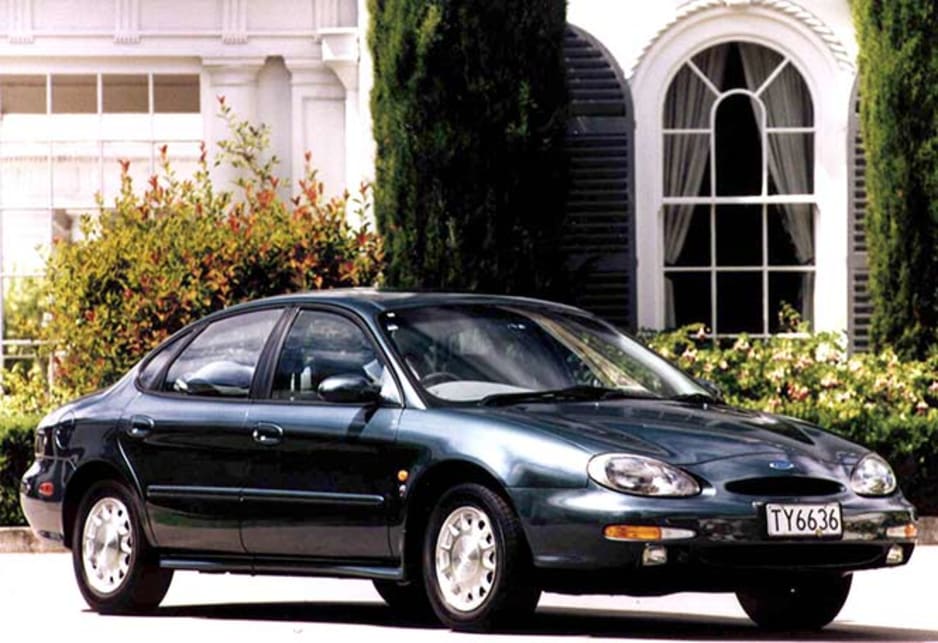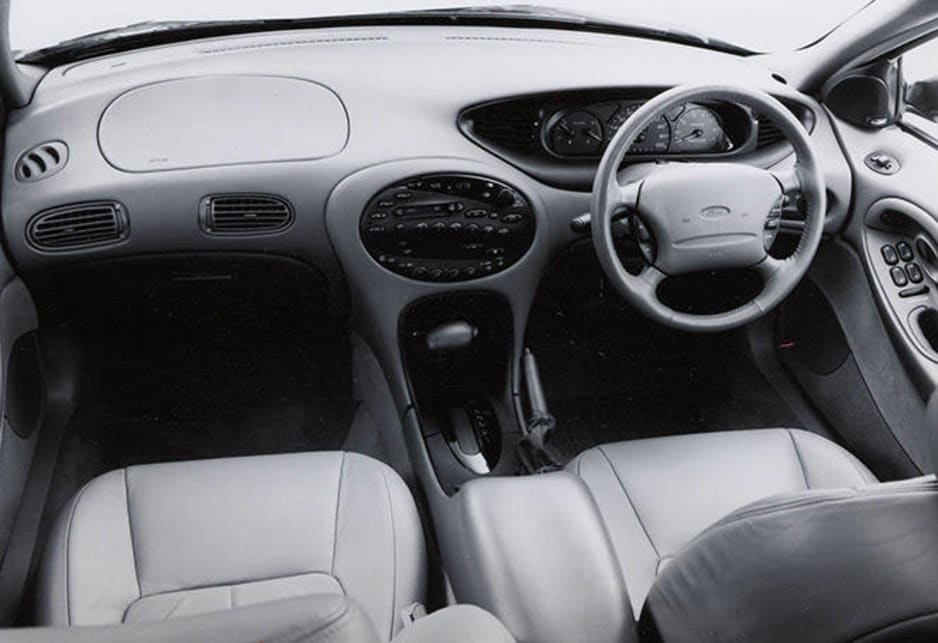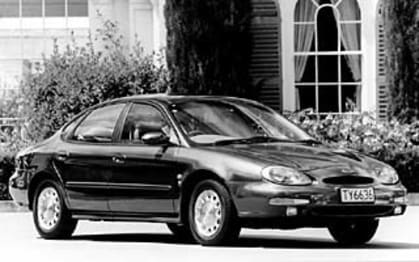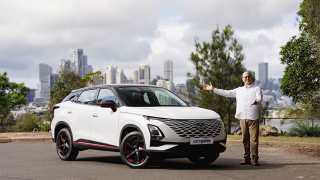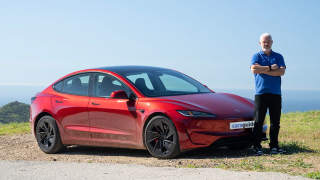
Used Ford Taurus review: 1996-1998
- Ford Taurus
- Ford Taurus 1998
- Ford Taurus 1996
- Ford Taurus 1997
- Ford Taurus Reviews
- Ford Reviews
- Ford Sedan Range
- Sedan
- Ford
- Used Car Reviews
- Buying tips
Looking for something different in the family car field? Then why not examine the big Ford Taurus? It’s a radically-styled large sedan from the USA, with flowing elliptical shapes inside and out. It pushed the boundaries of family car design in its day. It was bold, brave, very new age – and a disaster in the Australian sales race.
It wasn’t just the styling that killed the Taurus in the relatively conservative Australian market, arguably the biggest hurdle for the American import was our own Ford Falcon, which was selling up a storm at the time the Taurus arrived. The Falcon was not only cheaper, but considerably more spacious and better suited to our specific driving conditions, especially in outback driving.
Ford Taurus was sold in Australia only as a four-door sedan, despite there being wagons in the United States. It is reasonably spacious in the front seats but can be cramped for tall people in the rear due to the low roofline. Legroom isn’t too bad, but can create problems for adults if the front seats are set a fair way back.
The slanting tail treatment steals far too much space from the boot, making it all the more surprising that the station wagon wasn’t imported as well. Ford Taurus was only sold in Australia in topline Ghia specification; with climate-control, a six-speaker stereo, alloy wheels, ABS disc brakes, cruise control, power height adjustment for driver seat, power door mirrors, remote locking, alarm system and dual airbags.
The optional Luxury Pack added leather trim, six-disc CD changer, cargo safety net and power lumbar adjustment for the driver's seat. The big Ford Taurus is pleasant to drive if you don’t want to push the boundaries. It has good refinement and a comfortable ride. Taurus’ handling, while not exactly inspiring, is fine for the sensible family driver who simply wants to have a quiet, uneventful trip. Unlike Falcon, the Taurus uses front-wheel drive so has a fair bit of understeer if pushed hard - drive it normally and it’s nicely balanced and simple to handle.
Engine performance is good without being exciting. Unlike our own Falcon, the engine in the American car is mounted transversely. It’s a 3.0-litre V6 unit and power is generally fine, but torque is noticeably down on that of the 30 per cent larger Falcon 4.0-litre six of the same era. Smooth and quiet in operation, the Taurus' engine is a sweet unit to sit behind. Towing is not its forte, but if you stick to mid-sized loads there shouldn't be any hassles.
Resale value isn't especially good, particularly for the poor souls who bought one at full retail in the early days. Ford Australia was forced into heavy discounting to try to shift the cars – covertly at first, but later slashing a full $5500 off the recommended price. Spare parts may be available from most Ford dealerships, though those outside the major population centres may have to order some parts in. We haven’t heard of any unreasonable delays if this happens. It might be wise to check on aftermarket recyclers in your home area before becoming too keen on buying a Taurus.
Prices are higher than for Falcon, but not unreasonably so considering the fully-imported nature of the vehicle. Insurance premiums are generally favourable. After a frustrating two years of trying to sell Taurus Ford Australia finally gave up the battle in September 1998. It took several months for the final cars to be sold. Keep in mind that it’s the date of manufacture that’s taken into account when you come to sell the car, so if it was first registered early in 1999, you’ll still only be offered the price of a 1998 car when you trade it in.
WHAT TO LOOK FOR
Taurus has proven to be reliable. Build quality isn’t up to Australian standards, but there are no major hassles in cars that have been driven properly and serviced by the book. If possible try to check the engine when it’s completely cold, ideally first thing in the morning. Make sure it starts within a couple of seconds of the key being turned and that it idles smoothly and quietly.
During your test drive the Taurus’s engine should continue to be all but silent and should pull strongly without hesitation. Automatic gearchanges should be almost impossible to pick on a light throttle and only just felt when the car is driven moderately hard. Check the brakes pull the car up evenly, that there are no noises in the suspension and that the Taurus steers smoothly with no tendency to move off your chosen line under normal road conditions.
Look over the body for signs of repairs; checking the condition of the paint for consistency of colour and feel; looking at the panels for any slight ripple in their shape; and looking closely for paint overspray. Look over the condition of the interior and boot for signs of harsh use, but it can take a fair bit of rough treatment without excessive deterioration.
CAR BUYING TIP
Cars that didn’t sell well on the new-car market sometimes draw in a keen band of followers as they age. If so, the enthusiasts can be an excellent source of information on what to look for when buying one.
Pricing guides
Range and Specs
| Vehicle | Specs | Price* | |
|---|---|---|---|
| Ghia | 3.0L, ULP, 4 SP AUTO | $2,750 – 4,290 | 1996 Ford Taurus 1996 Ghia Pricing and Specs |
$2,750
Lowest price, based on third party pricing data



